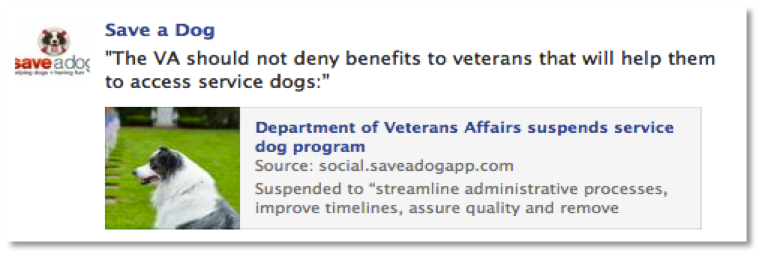
Social media, when used correctly as part of a business marketing strategy, can shorten the sales cycle by 40 percent. It’s an incredibly powerful tool for business owners. But many people don’t put the time or resources into creating social media content that functions effectively.
Here are three social media mistakes that you might be making right now. (And how to fix them.)
Mistake #1: Not leveraging social proof
When marketing your business through social media, you need social proof. Defined as “informational social influence,” social proof is the idea that when someone is deciding whether to do business with your company, they are swayed by reading about the experiences of others. If you have a lot of great testimonials about your business, social media is a good place to share them.
But, there’s a right way and a wrong way to do it.
Consider this example:
Do you believe that Dirk Edmundson is a real person? Maybe. Do you believe he said these things? Maybe. But the only thing you know for sure is that United Fund Mortgage and Realty, Inc. wants you to know that he said them. That’s social proof, but it’s not the most authentic way to show us what your customers have to say.
Take a look at this one instead:
Now, same questions. Do you believe that Shawn Irwin is a real person? Yes, there’s his picture. Do you believe he said these things? Yes, because it came right through his personal Facebook account.
This type of a presentation holds a lot more credibility for the viewer. And just like I took this screenshot to share with you, a business owner could screenshot a comment from his customer and share it on social media as a photo. Or, if the comment comes in the form of a hand-written letter, why not take a picture of the letter and share that?
Mistake #2: Ignoring the structure of your posts
Writing effective social media posts is both an art and a science. It takes good content, sure, but it also requires good technique. More and more, social media is about the visuals. People are looking at the newsfeed on their mobile phones, and they want to get through a lot of content in a short period of time. That means the most effective social media posts are short & sweet. And if your post isn’t attractive, it’s likely that people will skip it.
Long, text-heavy posts like this one sound the ‘scroll past it!’ alarm for most readers:
Another red flag is posts with visible links. It’s unattractive, and takes attention away from what you actually wrote:
Instead, try to keep your content brief and impactful. When sharing an article or a blog post, I love the idea of pulling a quote or a stat out of the story to grab your reader’s attention. And, look how much better the post looks if you delete that link. (Once the preview box comes up, you don’t need the link anymore – go ahead and erase it!)
One more tip: If your link doesn’t automatically come up with a picture, you can upload one yourself. Photos will get more attention for your post, and more people will click on it.
Mistake #3: Providing little value or expertise
Often, I see business pages on social media trying too hard to be “social.” They think that since this is social media, they need to share things that are funny or light. That’s not always the case. People connect with their friends on social media to be entertained – don’t try to compete with that. Most people follow businesses on social media to learn something or to get to know the business better.
This post was actually shared by a law firm. Holiday or not, is this the kind of image that you want tied to your business online?
Even posts like this one, which are seemingly innocent, have no place in a business social media strategy:
Remember, there is a difference between your personal social media and your business social media. On your company’s accounts, it is less important to be cute and fun, and more important to be useful and educational. Creating engaging business content on social media is about crafting stories (posts) that people remember. The memes and ‘Happy Friday’ sentiments you share will be gone as soon as people scroll past them. It’s the content that makes your readers better consumers of your industry that they will be talking about (and sharing with others) long after logging off.
Here are two good examples of valuable business content:
With a little forethought and planning, you can create content that is authentic, attractive and engaging – content that intrigues your viewers and makes them remember why they connected with your company in the first place. Deepening that emotional connection is what social media at its best is all about.
For more social media information, find us on Facebook!












